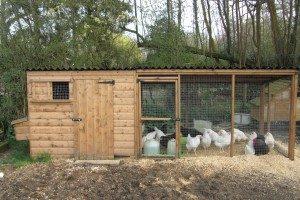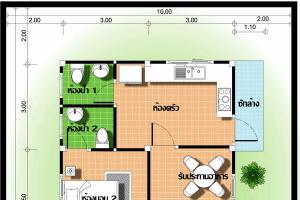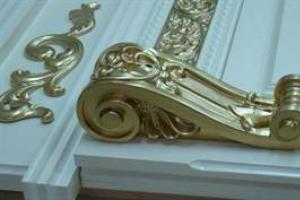One of the ways to process carpentry blanks is bending. Wooden blanks treated with hot steam are able to bend and, after drying, retain the resulting shape. Such technological process is not particularly difficult, but some features of how to bend wood should be taken into account. You may also be interested in pine stairs, which you can order on the website http://mirdereva.ru/.
Wood fibers are held together by a special substance - lignin, which, under the influence high temperature softens, and after cooling again binds the fibers. The process of bending blanks is based on this. It should be borne in mind that wood of different species can be bent in its own way. For bent products, it is best to use oak, beech, birch, yew, cherry, and elm. But pine, spruce, cedar, and alder should not be used for these purposes.
Work on bent parts begins with the choice of material. The workpieces must be straight-grained; the use of wood with curved fibers is not allowed. The prepared material is dried in natural conditions, under canopies, to a moisture content of no more than 20%. But artificially dried wood should not be used for bending, since it is less amenable to such processing. If you have to use such material, then before bending it must be soaked in water (at least a week). Soaking is also necessary for hard wood such as oak, ash, and beech.
To heat the workpieces before bending, it is best to use a steam chamber. It is easy to make such a camera at home using plastic pipe suitable sizes and a regular kettle. The parts are placed in a pipe, and steam is supplied from the kettle. The exposure time in the chamber depends on the size of the part and is determined experimentally. In this case, you can be guided by the fact that for 1 cm of the thickness of the workpiece, 30-40 minutes of steaming the wood are required.
In places of bending on parts, if the design of the product allows it, you can slightly reduce the thickness of the material and remove the chamfers. This will make the bending process easier. Thin workpieces, in the absence of a steam chamber, can be heated over an electric or gas stove.
Before you start bending wood, you need to prepare a form on which the part will be fixed, and clamps for fixation. It should be borne in mind that after heating the wood, there will be very little time to fix the workpiece, no more than 5 minutes. Therefore, everything needs to be done quickly, but if the part begins to cool, then it should be heated again. Otherwise, the workpiece may break.
Therefore, it is important to provide a design of molds and clamps that would allow the workpiece to be quickly fixed in the desired position. If the molds are made of wood, they should not be covered with any protective compounds, paint, varnish. Firstly, they deteriorate from heating, and secondly, they will interfere with the drying of the workpieces.
Short blanks are bent on mandrels of a larger radius, and then secured in a mold. This pre-bending reduces the likelihood that the part will break as the bend is formed. You need to keep the parts in shape until they dry completely so that they do not bend back. This usually takes 6 to 9 days and is determined empirically.
After freeing the workpiece from the clamps, it must be put aside for a day, and only then begin processing and finishing. This is necessary in order to relieve residual extension stresses. The tips are simple, but they will allow you to easily master the process of bending wood.
Bending is one of the methods for making beautiful and durable wood parts, for example, for furniture. For the home handyman It is quite possible to master such technology. A bent part is much stronger than a sawn part, less wood is consumed in its production, and the sawn surfaces produce half-end and end cuts, which complicate further processing and finishing of parts.There are three ways to bend wood. One of them, the most famous, involves preliminary steaming of wood and then giving it the required shape in powerful presses. This hot way bending is used mainly in mass production, for example, of chairs.
Along with it, especially at home, two other methods of bending wood are practiced, but in a cold state.
- First - solid wood bending with preliminary cuts along the bend.
- The second is bending, in which a bent part is produced by pressure in molds from a workpiece, which is a package of several layers coated with glue. thin stripes wood
- When bending in the second way - with cuts - narrow grooves parallel to each other are sawn into the workpiece to a depth of 2/3-3/4 of its thickness, after which the workpiece is given the desired shape.
The maximum bending radius depends on the depth of the cuts (and, accordingly, on the thickness of the workpieces), the distance between them and the flexibility of the wood. The cuts are made both parallel and perpendicular to the fibers. This work operation is performed using a crosscut or manual circular saw with guide stop. If you don’t have a special tool, a regular wood saw will do. The main thing is that the depth of the cuts is the same.
BONDING WITH SIMULTANEOUS BENDING
At wood bending fibers on inside compress, and on the outside - stretch. Wood “tolerates” fiber compression relatively easily, especially if it is pre-steamed. It is almost impossible to stretch it.
 Flexibility also depends on the type of wood and the thickness of the workpieces. For example, hardwood from the moderates climatic zones- beech, oak, ash, elm - easier to bend than tropical ones tree species(mahogany, teak, sipo, etc.). Conifers are too tough for this.
Flexibility also depends on the type of wood and the thickness of the workpieces. For example, hardwood from the moderates climatic zones- beech, oak, ash, elm - easier to bend than tropical ones tree species(mahogany, teak, sipo, etc.). Conifers are too tough for this.
The resistance value of bent wood until it breaks is determined by the ratio 1:50, i.e. The bending radius must be at least 50 times the thickness of the workpiece. For example, a workpiece with a thickness of 25 mm requires a radius of at least 1250 mm. The thinner the wood, the easier it bends. Therefore, where possible, it is advisable to make a part of the appropriate shape by bending (Fig. 1).
In this method, individual strips of wood of the same thickness and width are glued, laid in several layers so that their grains are parallel, and placed in a mold made of hardwood. The matrix and the mold punch are compressed with clamps and the bag is left in this position until the glue dries.
The thickness of the strips glued to each other can vary between 1-6 mm, again depending on the required bending radius. Cold-curing glue is suitable for gluing layers. If bent-glued blanks are intended for use in external structures, it is best to use waterproof glue.
BENDING USING CLAMPING DEVICES AND PRESS FORMS
To determine the permissible thickness of the veneer strips or planks to be bent (with a larger thickness, the wood may break), you need to know the smallest bending radius. The wood is most deformed on the inside of the bend. Therefore, it is always necessary to measure here.
As an auxiliary device, it is advisable to use a template that you can make yourself. To determine the bending radius, we take an ordinary school compass and draw several circles on tracing paper (with a slight increase in their radius) that have a common center. As a result, we get a template. We apply it to the surface of the bend, for example, a mold, and move it until we find a suitable circle largest diameter. We measure its radius on a template. We divide the resulting value by 50. The quotient of the division will be the maximum allowable thickness of the strip of plank or veneer.
When working with molds, the bend on the outside of the workpiece should be smoother than on the inside. In this case, we draw two circles from one center, the radii of which differ by the total thickness of the strip material.
The most difficult situation is when it is necessary to bend a part of a complex configuration with different bending radii. Here, bends for the inside or outside of the workpiece can be constructed freely if its shape is not tied to the contours of any piece of furniture.
In this case, the line for the second cut (the first one is at the beginning of the bend) can be constructed like this. Using a compass, measure the total thickness of the layers to be glued, draw a circle with it on hard cardboard, cut out a circle and apply it in several places to the line of the first cut. At the same time, we apply the circle so that it is in contact with the first line, and draw its outline on the opposite side, respectively. The second cut line will be the end-to-end connection between these auxiliary lines.
BENDING TECHNOLOGY WITH MAKING NOTCHES ON BLANKS
 When determining the number of cuts to be made on a workpiece for bending along a known radius (it also depends on the width of the groove and the type of wood), we use an auxiliary structure. To do this, we take a block similar to the workpiece (Fig. 2). We cut out one single cut on it with a depth of 2/3-3/4 of the thickness of the block. Draw a straight line on a sheet of paper and mark the cut point on it.
When determining the number of cuts to be made on a workpiece for bending along a known radius (it also depends on the width of the groove and the type of wood), we use an auxiliary structure. To do this, we take a block similar to the workpiece (Fig. 2). We cut out one single cut on it with a depth of 2/3-3/4 of the thickness of the block. Draw a straight line on a sheet of paper and mark the cut point on it.
We place the block on the paper so that its lower edge before the cut coincides with the drawn line and the marked point of the cut, and fasten the block with a clamp to the work table. We set aside the distance of the required radius b on the line and the block and bend the block until the upper edges of the cut meet. The distance a between the end of the line and the mark on the block will be the distance between the individual cuts that can be marked on the workpiece.
If cuts need to be filed on the outside of the workpiece, the distance between them and, accordingly, their number are determined in the same way. We bend the workpiece as much as the elasticity of the wood allows. If the test piece of wood breaks, then this can be expected from the workpiece fixed in the mold.
Based on materials from the magazine "Do It Yourself"
Often during the process repair work There is a need to obtain curved surfaces of products made from wood. How to bend a board so that the bend is strong and does not crack during the bending process? Well, if you have already decided to do major renovation with your own hands, then you should not retreat in the face of such difficulties. In this article we will talk in detail about how to give wood material curved shape.
How to bend a tree?
No, our task is not at all to bend an innocent plant. We are talking about wood building materials. How to bend a tree so that it bends and does not break? Bending method wooden products known since ancient times: to give wood a shape, only heat and moisture are needed, under the influence of which the plasticity of the material increases with all the ensuing consequences. How to bend a tree? Hold it in hot water (the higher the temperature, the faster the processes occur) or steam ( a steam generator can be made from a kettle or use an iron). The higher the temperature, the faster the wood gives way and you can start bending it. Moistened and heated wood can be bent under the influence of a load (the ends of the board are placed on supports), and a load is placed in the place of the future bend. Dried wood perfectly retains the minimum radius of curvature that was achieved during the bending process. Now we know how to bend wood, we can dwell on this issue in more detail.

Wood reaction to external influences
The fact is that wood reacts differently to bending. The convex part is subject to tension, the concave part is subject to compression. Moreover, the material also reacts differently to steaming. For example, the ability to compress increases by as much as a third, but the ability to stretch - just a couple of percent. That’s why you shouldn’t think about how to bend a board more than two centimeters thick at home. It is also necessary to take into account that different types wood reacts differently to bending. For example, such species as oak, larch, and maple bend poorly, but beech, ash, and walnut bend well. So before you think about how to bend the board, decide on the type of wood from which it is made.
How to bend plywood, fiberboard, MDF
At home, plywood is bent by increasing its humidity, then ironing it (an iron is required), and fixing it in a template. Any template can be used frame element and it is not at all necessary that its shape should be curvilinear. The product is attached to the template using tape. You can clamp bent plywood between two spacers, give it a bent shape using ropes, tying them around the product in several places along the radius of curvature. Plywood can only be used after it has dried. It seems that we have figured out how to bend plywood - let's move on.
How to bend fiberboard? The technique is the same as in the previous case! How to bend MDF? In this case, you can go two ways: either bend thin sheets (no more than 5 mm) and glue them together, or use flexible MDF, in which there are transverse slots on one side. The thickness of such sheets is usually 8 mm. When bending, they are placed on top of each other with their milled sides, and then glued together. That's all!
READ ALSO
 |
Any construction begins with a foundation, and a bathhouse is no exception to the rule. Tape, slab, columnar – there are many types of bases. But how to choose the option that is optimal? The very solution that allows you to save on foundation construction without compromising its quality? Find answers to these questions in our review. |
 |
Stairs in a house can be a significant design element of interior design. We offer you over ten staircase design options: from simple to complex. Some of the ideas are suitable for implementation in small two-level apartments and country houses, others will be more appropriate in spacious cottages. Choose! |
Nature does not like straight lines and it takes a lot of time and effort to make wooden products straight. However, bending wood is also a rather labor-intensive process. Bent wooden elements often used in Scandinavian furniture in the form of beautiful, light and durable products with unity of structure and form. In this article we will look at several ways to bend wood: simple power bending, bending using cuts, steam bending and layer bending.
This is the simplest method and involves bending wood by hand and attaching it to a mold to secure the bend. The thinner the wood, the easier it is to bend. It follows from this that the greater the bend, the thinner the wood should be. Veneer can take on almost any bend, while an oak blank 2 cm thick is almost impossible to bend. It should also be taken into account that different breeds woods have varying degrees of flexibility. So the ratio of the thickness of the workpiece and the minimum bending radius for some species will be: beech - 1/2.5; oak - 1/4; birch - 1/5.7; alder - 1/8; spruce - 1/10; pine - 1/11. That is, with a beech blank thickness of 10 mm, the minimum bending radius will be 25 mm.
As a rule, the workpiece is fixed with glue, since the use of nails or screws in bending areas can lead to the formation of cracks and breaks. There is an unspoken rule - what can be fixed by hand can also be fixed with glue. When gluing, to reduce gaps, you need to move from the center to the edges, or from one edge to the other.
This method of bending wood is the least durable because the wood is sawed through almost the entire thickness and very little strength remains in it. Therefore, this method of bending wood is used only where there is no heavy load, for example rounded corners, etc.

The main material for the manufacture of bent-sawn parts is plywood. For achievement best results it is better to make cuts on circular saw using a limit stop. The cuts should be made across the grain at a distance of about 5-10 mm. from each other. The depth of the cut should be about 1/5 of the thickness of the workpiece.
To fix the bend, you can use glue or wood filler. By gluing and fixing two curved slats with cuts inward, you can create interesting elements in some designs, although with limited strength.
According to their own physical properties such wood is close to hydrothermally bent wood, and in terms of some indicators of dynamic loads, it has even better mechanical properties, rather than solid wood.
The first step is to prepare the slats. The thickness of the lamellas is largely determined by the amount of bending. The greater the bend, the thinner the lamellas should be and vice versa. As a rule, the thickness of the lamellas should not exceed 3.2 mm.

The cut layers of wood are then coated with glue and pressed into the template using grippers. You cannot use regular wood glue to connect the slats. For these purposes, adhesives based on urea-formaldehyde or epoxy resins are best suited.
Before removing the part from the template, the glue should set within 24 hours. It should also be taken into account that after the mold is released, the workpiece may straighten out a little. This effect can be minimized by reducing the thickness of the lamellas or creating a shape with a slight bend.
Hydrothermal bending of wood gives the highest quality results, but requires a lot of labor and technical equipment.
Before starting the bending process, due consideration should be given to the choice of wood. Almost any type of wood can be bent, but hardwoods such as oak, beech, elm, birch, cherry, maple, walnut, and ash have the best flexibility. It is not recommended to use coniferous and soft species such as spruce, pine, cedar, and alder. It is also important that the wood is free of cracks and knots at the intended bend.

Each cell of wood fibers is covered with lignin - glue-like chemical, which at ordinary temperatures firmly binds the fibers. The heat transferred by the steam softens the lignin, allowing the fibers to shrink and stretch. As the lignin cools, it hardens and binds the fibers tightly together again.
Freshly cut wood is best suited for bending. The best option Atmospheric drying wood is also an option, since during chamber drying lignin is noticeably strengthened, making bending more difficult. Before steaming, kiln-dried wood can be soaked overnight in water. Processing of atmospheric-dried wood and pre-soaked chamber-dried wood requires the same amount of time.
Wood acquires its best plastic properties at a humidity of 25-30% and at a temperature of about 100°C. Steaming time depends on the thickness of the wood. So, for example, to steam a workpiece with an initial humidity of 30% and a thickness of 25 mm until the temperature in the center of the workpiece reaches 100°C, it takes 1 hour, and with a thickness of 35 mm - about 2 hours.
Before removing the workpiece, make sure that all tools are at hand, as the wood cools and hardens very quickly. Be sure to wear thick gloves to avoid getting burned by the steam. Remove the part and immediately secure it with the grips.
Removal of the product from the mold is usually accompanied by a slight bending. Therefore, the form must have a bend a little more than required in order to maintain the desired curvature of the product. To minimize flex, leave the piece secured in the mold for at least a few days.
How to bend a board, plywood, fiberboard, MDF with your own hands
Often in the process of carrying out repair work there is a need to obtain curved surfaces of products made of wood. How to bend a board so that the bend is strong and does not crack during the bending process? Well, if you have already decided to do major repairs yourself, then you should not retreat from such difficulties. In this article we will talk in detail about how to give wood material a curved shape.
How to bend a tree?
No, our task is not at all to bend an innocent plant. We are talking about wood building materials. How to bend a tree so that it bends and does not break? The method of bending wooden products has been known since ancient times: to give wood a shape, all that is needed is heat and moisture, under the influence of which the plasticity of the material increases with all the ensuing consequences. How to bend a tree? Keep it in hot water ( the higher the temperature, the faster the processes occur) or steam ( a steam generator can be made from a kettle or use an iron). The higher the temperature, the faster the wood gives way and you can start bending it. Moistened and heated wood can be bent under the influence of a load (the ends of the board are placed on supports), and a load is placed in the place of the future bend. Dried wood perfectly retains the minimum radius of curvature that was achieved during the bending process. Now we know how to bend wood, we can dwell on this issue in more detail.

Wood reaction to external influences
The fact is that wood reacts differently to bending. The convex part is subject to tension, the concave part is subject to compression. Moreover, the material also reacts differently to steaming. For example, the ability to compress increases by as much as a third, but the ability to stretch - just a couple of percent. That’s why you shouldn’t think about how to bend a board more than two centimeters thick at home. It is also necessary to take into account that different types of wood react differently to bending. For example, such species as oak, larch, and maple bend poorly, but beech, ash, and walnut bend well. So before you think about how to bend the board, decide on the type of wood from which it is made.
How to bend plywood, fiberboard, MDF
At home, plywood is bent by increasing its humidity, then ironing it (an iron is required), and fixing it in a template. Any frame element can serve as a template and its shape does not necessarily have to be curvilinear. The product is attached to the template using tape. You can clamp bent plywood between two spacers, give it a bent shape using ropes, tying them around the product in several places along the radius of curvature. Plywood can only be used after it has dried. It seems that we have figured out how to bend plywood - let's move on.
How to bend fiberboard? The technique is the same as in the previous case! How to bend MDF? In this case, you can go two ways: either bend thin sheets (no more than 5 mm) and glue them together, or use flexible MDF. in which there are transverse slots on one side. The thickness of such sheets is usually 8 mm. When bending, they are placed on top of each other with their milled sides, and then glued together. That's all!
http://cdelayremont.ru








